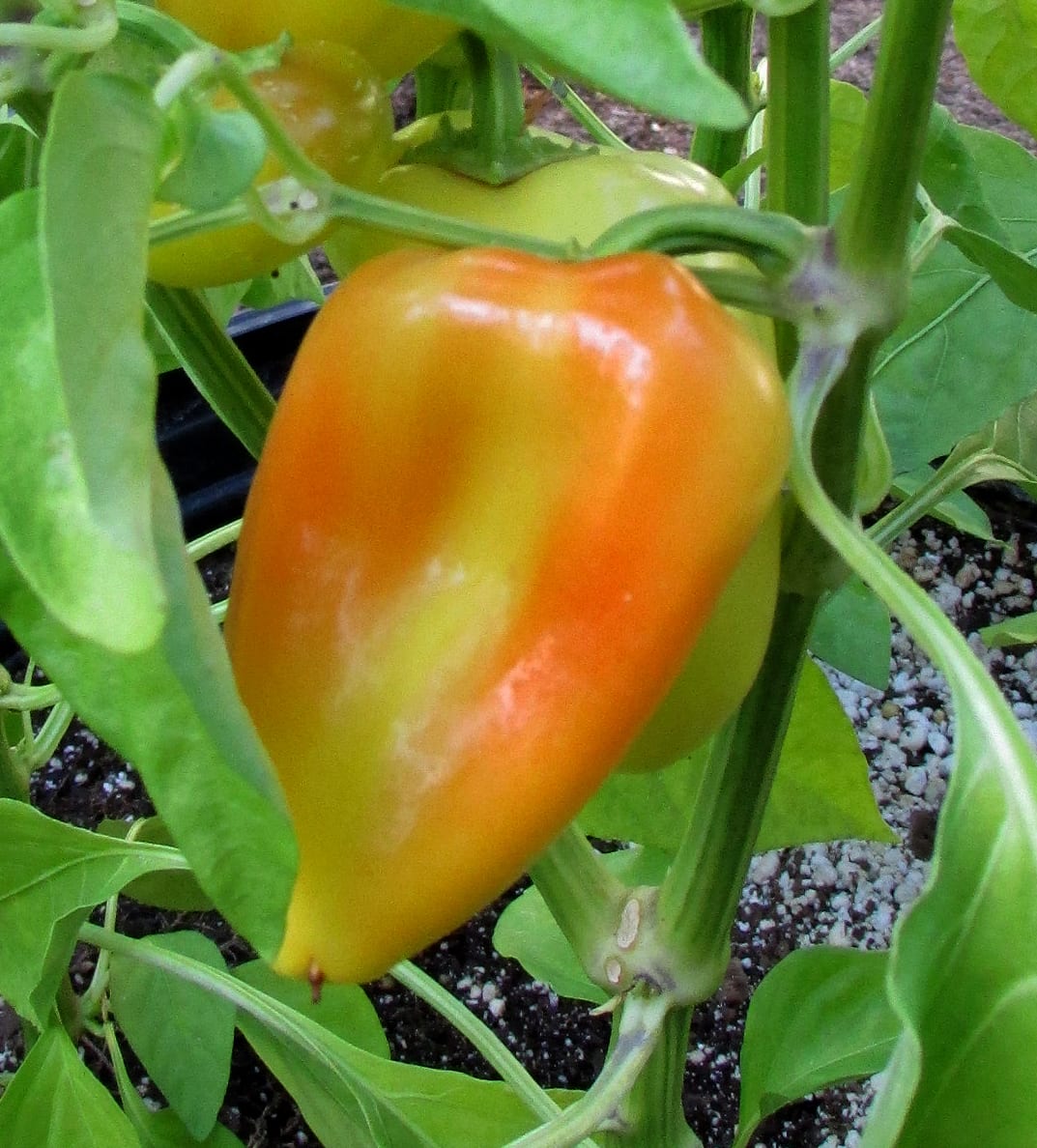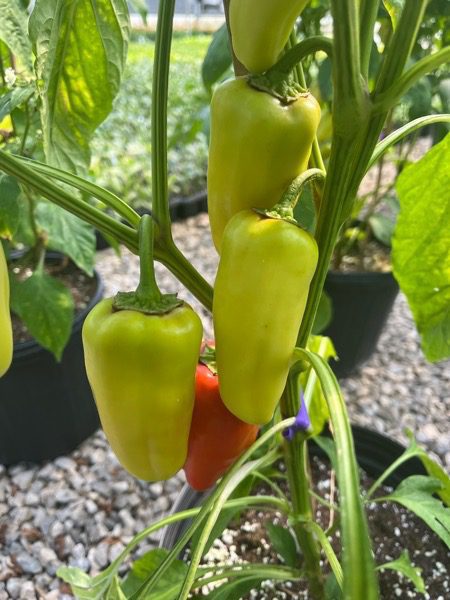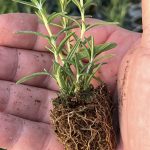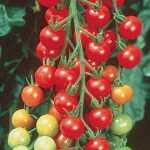Pepper, Gypsy
Price range: $0.89 through $5.99
Discount per quantity
| Quantity | 3 - 8 | 9 - 14 | 15+ |
|---|---|---|---|
| Price | Price range: $0.86 through $5.81 | Price range: $0.84 through $5.63 | Price range: $0.80 through $5.39 |
| % Discount | 3% | 6% | 10% |
Description
Gypsy Sweet Pepper (Capsicum annuum): Early, Sweet, and Prolific
Why We Love Gypsy
We all want a pepper that shows up early and keeps the bowl full. Gypsy does exactly that. The fruit starts a pale, creamy yellow, then warms to orange, and finally ripens to a bright red. Each stage tastes sweet. Each stage looks beautiful. In other words, you get color, flavor, and steady harvests from one compact plant.
The shape is a tapered wedge, about 3–4 inches long, with thin, tender skin. Slices are crisp and juicy. The walls are not too thick, so the bite feels light. That makes Gypsy perfect for snacking, salads, and quick sautés. It also shines in the pan. A fast toss in olive oil brings out a gentle, caramel note. You taste sunshine in every bite.
Plants are compact and tidy, usually 18–24 inches tall. They branch well and set lots of fruit. You do not need a big garden to enjoy them. A sunny patio or balcony is enough. One plant can load a family plate with color all season.
Most of all, Gypsy matures early. From a healthy transplant, your first pale-yellow peppers often arrive around 60–65 days. That’s fast. While other peppers are still thinking, Gypsy is already feeding you. Then it keeps going. With steady water and a bit of support, it produces right up to fall.
Quick highlights
- Type: Sweet pepper, hybrid, early maturing
- Fruit: 3–4″ long, tapered wedge; thin, tender skin
- Color journey: Pale yellow → orange → red
- Flavor: Sweet and juicy at every stage; sweetest at red
- Plant size: Compact, about 18–24″ tall and wide
- Days to maturity: ~60–65 from transplant (first pale-yellow harvest)
- Use: Snacking, salads, stir-fries, roasting, quick pickles
- Where it shines: Raised beds, containers, small gardens, market baskets
Why this variety stands out
- Early and reliable: Harvest sooner, enjoy longer.
- Generous yields: Many peppers per plant, week after week.
- Thin skin, big crunch: Easy to slice, easy to eat, easy to love.
- Container-ready: Thrives in a 5–10+ gallon pot with good sun.
- Color that sells itself: Bowls glow even on cloudy days.
Specs at a glance
- Botanical name: Capsicum annuum ‘Gypsy’
- Growth habit: Compact, branching; may need light staking when loaded with fruit
- Sun: Full sun (6–8+ hours)
- Soil: Rich, well-drained; consistent moisture
- Spacing: 18–24″ between plants; 24–36″ between rows
- Water: Deep and steady; aim for even moisture
- Season: Warm-season annual; frost sensitive
Planting & Care Made Simple
Set Gypsy up for success with heat, sun, and even moisture. The rest falls into place.
Timing & temperature
Plant outdoors after all danger of frost. Night temps should be above 55°F, and the soil should feel warm. Peppers love steady warmth. If spring is cool, wait a week. Patience pays with stronger plants and earlier fruit overall.
Site & soil
Choose the sunniest spot you have. Six to eight hours is good; more is better. Work in compost before planting to build a soft, rich bed. Drainage matters. If your soil is heavy, use a raised bed or add coarse material to open it up. In containers, use a high-quality potting mix. A 5–10+ gallon pot with a drainage hole is ideal per plant.
Planting depth
Unlike tomatoes, peppers should be planted at the same depth they grew in the pot. Keep the stem at soil level. Firm the soil and water well to settle roots.
Spacing & support
Space plants 18–24 inches apart. Air can move. Leaves dry fast after rain. Stems stay healthy. As fruit sets, a simple stake or small cage keeps branches from bending. Soft ties work great. Think “gentle support,” not heavy trellising.
Watering rhythm
Go for deep and even. Water at the base. Let the top inch of soil dry slightly between waterings, then soak again. Mulch with clean straw or shredded leaves to hold moisture and stop soil splash. Even moisture keeps fruit smooth and helps prevent tip issues like blossom-end rot.
Feeding
Start with a balanced, gentle fertilizer at planting. When the first flowers appear, shift to a bloom/fruit-supporting feed with modest nitrogen. Too much nitrogen means lots of leaves and fewer peppers. We want fruit, so we stay balanced. A monthly ring of compost around the drip line is an easy boost.
Pruning (keep it easy)
Peppers don’t need much pruning. Pinch just the lowest leaves or any that touch the soil. If you want a bushier plant, you can pinch the first tiny flower. The plant will branch more and set many fruits a little later. Both paths work. Choose what fits your season.
Common issues & simple fixes
- Blossom-end rot: Usually from uneven watering. Keep moisture steady and mulch.
- Sunscald: In extreme heat, leave some leaf cover over fruit. Light pruning only.
- Aphids or flea beetles: Rinse with water, invite ladybugs, or use a gentle soap spray.
- Slow growth in cool weather: Be patient. Warm nights kick growth into gear.
Container success tips
- Pot size: 5–10+ gallons per plant. Bigger pot = more buffer for roots.
- Mix: High-quality potting mix (not garden soil), with good drainage.
- Water: Containers dry faster. Check daily in heat, but keep the “even, not soggy” rule.
- Support: Add a small stake or cage at planting time for a clean, upright shape.
- Feed: Light liquid feed every 2–3 weeks once flowering begins.
Companions that play well
Basil, marigold, dill, oregano, and nasturtium make great neighbors. They add flowers for pollinators and bring a little pest balance. Plus, they look good. A pretty bed is a bed you tend more often, and that always helps yields.
Season care checklist
- Plant after nights stay above 55°F
- Full sun, rich soil, steady moisture
- Mulch to hold water and keep fruit clean
- Support branches as clusters load up
- Feed modestly—focus on fruit, not just leaves
- Harvest often to keep plants producing
Harvest, Kitchen Uses & Quick Tips
Harvest starts early with Gypsy. Your first crop often comes at the pale-yellow stage about 60–65 days after transplant. That’s when the texture is extra crisp and the flavor is clean and sweet. If you leave peppers to color, they turn richer and sweeter—yellow to orange, then red. Try all three stages. Each one shines.
Pick with pruning shears or a gentle twist to avoid tearing stems. Check plants every couple of days. Frequent harvest encourages more flowers and more fruit. It’s the easiest way to keep bowls full.
How to read ripeness by color
- Pale yellow: Crisp, mild-sweet, great for fresh slices and quick pickles.
- Orange blush: Juicier and warmer in flavor; perfect for sautés and sheet pans.
- Red: Sweetest and most aromatic; ideal for raw salads, char, and roasting.
Kitchen ideas we love
- Snack plates: Cut into strips with hummus, ranch, or herbed yogurt.
- Skillet supper: Sauté Gypsy strips with onions and garlic. Add sausage or chickpeas.
- Sheet-pan peppers: Toss with olive oil and salt. Roast hot until edges char.
- Quick fridge pickles: Thin rings + vinegar, sugar, salt, and a clove of garlic.
- Pasta toss: Roast peppers, blend half with olive oil and lemon, then fold in the rest as ribbons.
- Frittata helper: Sauté cubes, add eggs and cheese, bake until puffed.
Saving your harvest
Keep fresh peppers in a cool room or the fridge crisper for up to a week. For longer holds, slice and freeze on a tray, then bag. They go straight from freezer to pan for sauces, soups, and sautés. You can also roast, peel, and pack in olive oil for quick sandwiches and appetizers.
Seed saving note
Gypsy is a hybrid. If you save seed, the next generation may not come true to type. For reliable results next season, start with fresh seed or another strong transplant. That’s how we keep the flavor and early habit you bought it for.
What you’ll receive
Choose vigorous, garden-ready transplants when in season or premium seed for your own starts. Transplants arrive well-rooted and pruned for branching, so they settle fast. Seeds are fresh and selected for strong germination. Either way, you’re set for early color and sweet crunch.
Design & layout ideas
Give Gypsy the sunny front row in a bed or container. Edge with basil and marigolds for color and helpful fragrance. In a large pot, set one pepper as the star and tuck trailing thyme at the rim. It looks styled on day one and only gets better as peppers color.
Troubleshooting at a glance
- Flowers drop in heat? Keep water steady and mulch; plants reset when nights cool.
- Leaves curling up? Often heat or dry air. Water deeply and add light shade in extreme afternoons.
- Peppers small? Give a light feed and confirm full sun. Harvest more often to push new sets.
Why Gypsy belongs with us
We pick peppers that pay us back. Gypsy gives early fruit, easy care, and sweet flavor in every stage. It fits small spaces. It fills bowls fast. It makes weeknight cooking simple. Instead of waiting and waiting, we start enjoying sooner—and keep enjoying for months.
Bright Bounty, Simple Joy—Bring Gypsy Home
Plant Gypsy where the sun is kind and the soil drains well. Water deep, feed modestly, and clip often. After more than a few weeks, you’ll have a steady, colorful harvest you can count on. From crisp yellow slices to deep red sweetness, this pepper keeps your table bright and your meals easy. Let’s grow a dependable favorite together—early, sweet, and always generous.
Additional information
| Weight | N/A |
|---|---|
| Options | Seed 10 count, 3.5 in. (12.3 fl. oz.) Pot |






